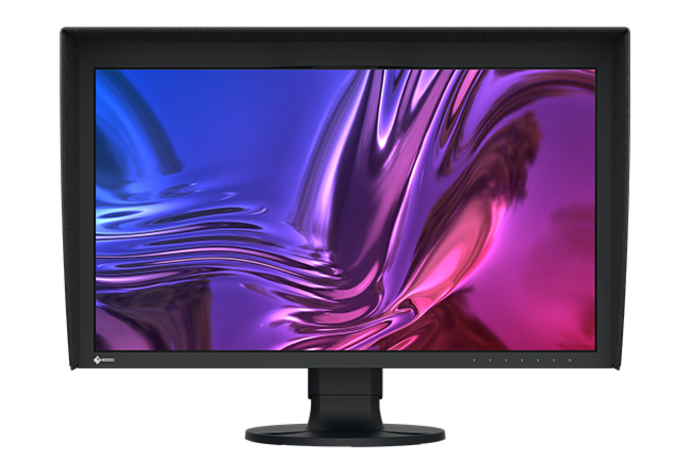With his work "State of nature", Marvin Dreblow has won second place in the new BFF Promotion Award 2022. As a competence partner of the BFF, EIZO provided the main prizes of the three winners. Here, the runner-up gives insights into the concept and creation of his work and shares his experiences with his new monitor ColorEdge CG2700S.
Award-winning and surprisingly different

When we walk through the forest, we all associate it with a feeling of nature, idyll and wilderness. Fauna and flora seem to be left to themselves. If you look a little more consciously, this supposedly wild nature often consists of a highly man-made cultural landscape, even in national parks. Geometrically shaped, closely planted tree monocultures, often with markings of spray paint, criss-crossed by a network of forest paths that, seen from the air, bears not a little resemblance to the streets of Manhattan. The game population is also strictly regulated. And yet the old familiar forest feeling quickly prevails. Marvin Dreblow became aware of this while reading a text by Thomas Kirchhoff in the book "Naturphilosophie". In his work "State of Nature", Dreblow deconstructs this transfigured perception of the forest.
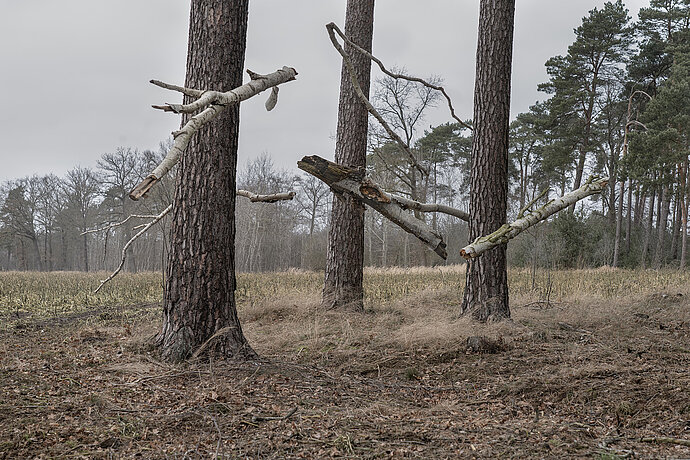
A diffuse sky, desaturated colours and flat contrasts form the visual link of Dreblow's winning work.
Floating trees? Photoshop - or?
Dreblow's cycle shows trees and bushes with logical breaks. For example, large branches float weightlessly, sometimes upside down, a tree is missing a complete part of the trunk, another tree grows in a circle back into the trunk. Anyone who is not familiar with Marvin Dreblow and his work will almost inevitably come to the conclusion that a lot of Photoshop must have been involved in this picture cycle. But here the viewer is mistaken. A closer look at Dreblow's life story explains why this is so.
The photographer comes from a farm in the Wendland. The district of Lüchow-Dannenberg is the smallest and most sparsely populated district in the old federal states. Not an environment in which one belongs to the mainstream with the desire to study liberal arts. But that has not prevented Dreblow from putting his plan into practice. He has been studying free art at the University of the Arts in Bremen for five years. "I was looking for freedom in my form of artistic expression and didn't want to commit myself to anything," says Dreblow, explaining his choice of subject. However, he quickly realised that he could express himself best through the medium of photography. Photography is the end product, the documentation of the work of art. But the before and in-between is just as important to Dreblow. In many of his works, empty spaces always play a major role. This is probably also the reason why - contrary to what the first impression might suggest - only a minimum of Photoshop is actually used in his work.
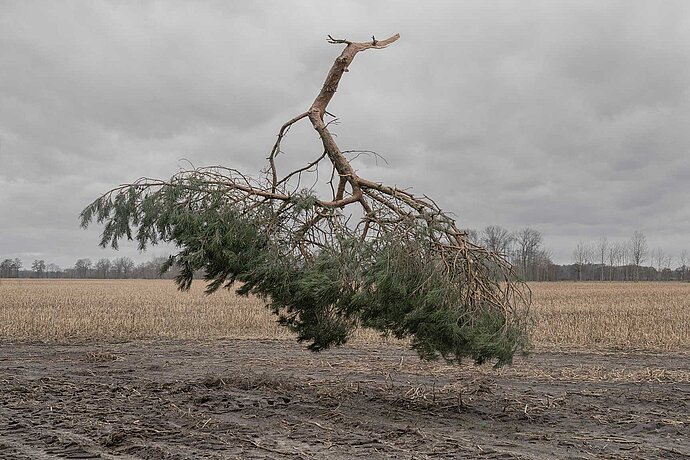
Condition 7: A large branch floating upside down - surely there was a lot of Photoshop involved, right?
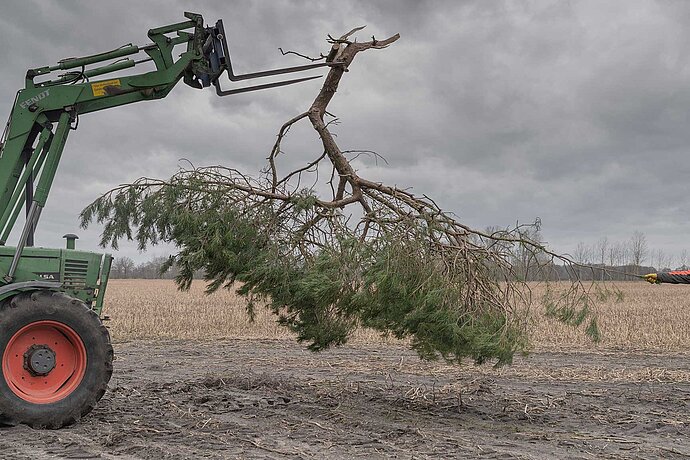
The making-of image shows how much reality and how little Photoshop can be found in Dreblow's work.
As much reality as possible in surreality
Unlike some other "country bumpkins", Dreblow does not want to escape his rural homeland with the help of art, but wants to bring art into it. And he does this by taking advantage of the opportunities offered by his homeland and his parents' farm, which includes woodland. "The project 'State of Nature' was almost a father-son job," Dreblow tells us. He himself contributed the idea, the concept and the photographic skills. His father the forest and the Tractor. Believe it or not, in most of the pictures the only image manipulation was to remove the tractor forks or other holding infrastructure from the picture. The objects themselves were actually photographed on the spot. This explains the absolutely realistic incidence of light and shadows. As a binding element, all the photos are taken under a diffuse sky, which has already helped the works of Bernd and Hilla Becher to achieve their iconic objectivity. Dreblow's images are striking for their desaturated colours and flat contrasts. "The idea was to photograph a surreal, rather observational, almost threatening mood," Dreblow explains the look of his images. Through the paradoxical image manipulations that contradict physics, Dreblow succeeds in questioning and deconstructing the mirage of the cultural landscape "forest" that has been created through transfiguration and selective perception: "I make claims that the viewers then have to question and compare with reality."
The fact that these images are as far as possible "in situ", i.e. on the spot, makes Dreblow's work all the more valuable and sets a refreshing counterpoint to the spirit of the time to create images purely on the computer without ever having set foot outside the door - gladly created from stock footage and with artificial skies and lighting moods at the touch of a button with the help of artificial intelligence.
How did he do it now?
How did images like the floating branch of his work "state of nature 7" come about? "First I took a picture without the big branch. Then we balanced the branch upside down on the pitchfork of our tractor and placed it in place," Dreblow explains. In post-production, only the fork and the tractor had to be retouched out. And the tree in the work "Condition 2" was also photographed in place despite the sawed-out trunk. To do this, Dreblow attached a hidden support beam to the back of the birch before sawing out a piece of the trunk. By taking another photo after removing the sawn-off trunk, Dreblow was able to easily retouch out the supporting structure.
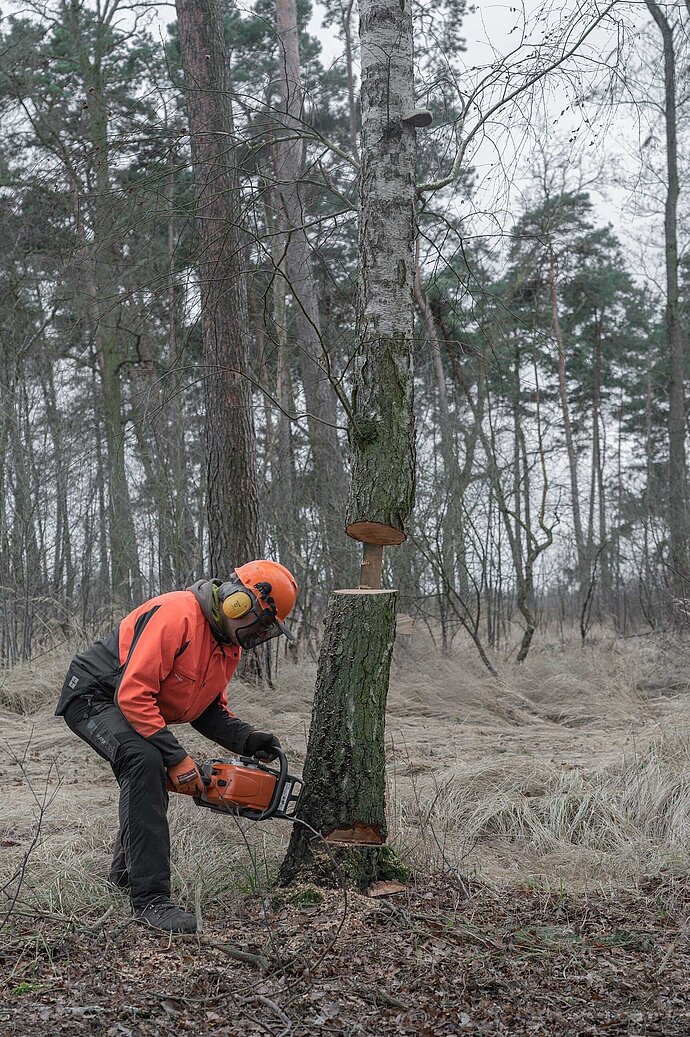
Condition 1: A birch tree with a complete piece of the trunk missing. How did Dreblow photograph this?
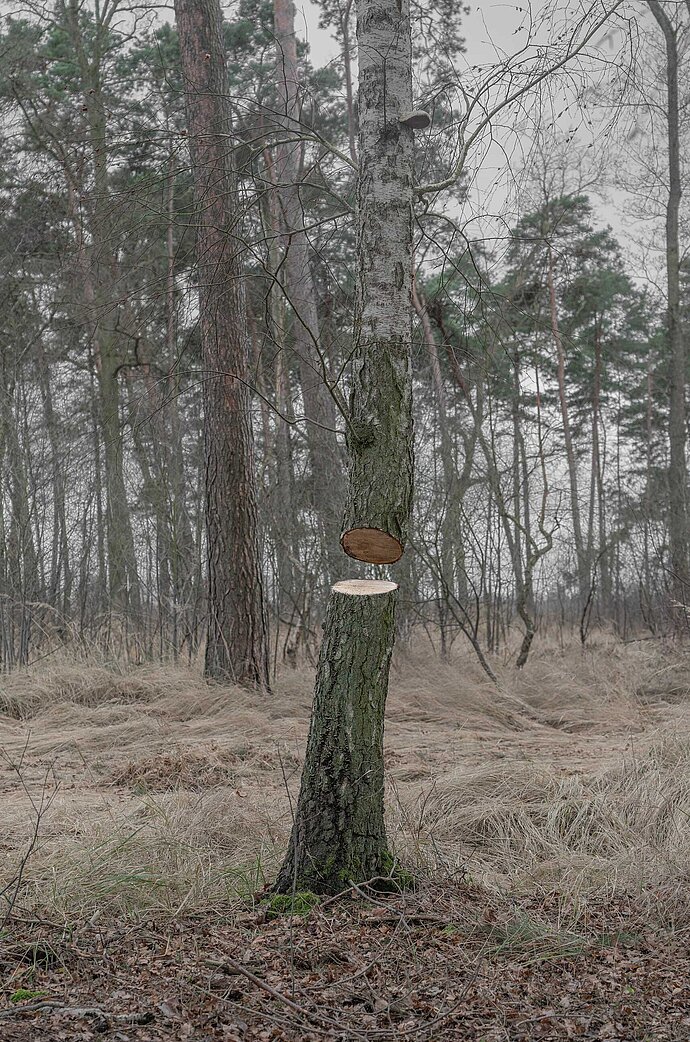
In this motif it is also clear that the tree was photographed with the missing part. The trick is the support structure retouched out afterwards.
The new BFF Award for Young Photographers
With this work, Dreblow has succeeded in creating an initially quiet competition entry that only fully unfolds its full fascination at second glance and with the appropriate background knowledge. It is therefore no wonder that he was able to inspire the expert jury of the New BFF Sponsorship Award 2022 for Young Photographers of the BFF (Berufsverband für Fotografen und Filmgestalter e.V.) with it. The New BFF Award does not only consist of a jury of works submitted on a specific theme. Rather, it is designed as an unusually elaborate support programme for young photographers and video makers. Unlike many other competitions, you cannot enter with a finished work, but apply with a concept that you then want to realise during the competition period. The best 12 submissions will be invited to take part in two intensive workshops in Hamburg and Zingst. All participants will be assigned a BFF photographer as a mentor who will intensively accompany the implementation of the concept. A jury of experts will then select the three winners from among these 12 workshop participants. This unique concept is thus primarily designed to gain knowledge and actually promote young talent, rather than simply award prizes. "Through the two workshops, we really grew together into a great group," Dreblow recalls and continues: "We learned a lot from the speakers and from each other, and the intensive support from the mentors was a great help. I continue to have valuable contact with my mentor Jörg Rothhaar".
Mentor Rothhaar explains: "Whether a photographer sees himself as an artist or works as a creative in advertising, at the core it is always about condensing what is seen into an image so that it works in the intended context. I think we have a very good understanding of this.We worked well together with a lot of trust, always committed to Marvin's position as an artistic photographer."
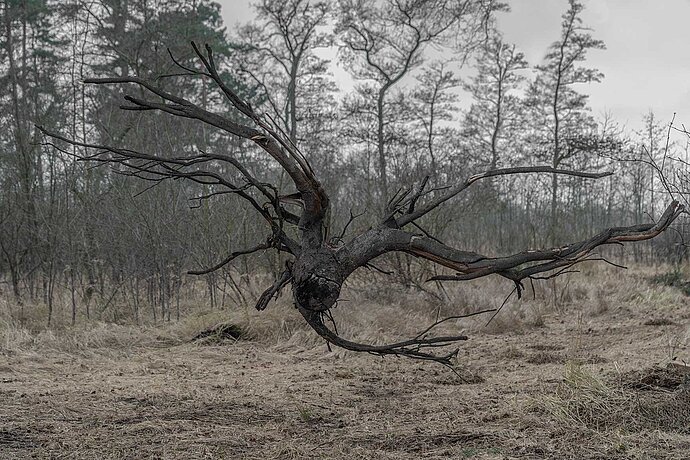
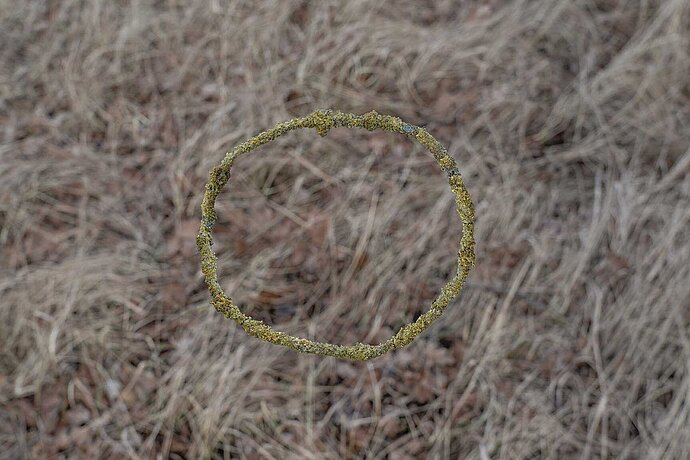
Experiences with the ColorEdge CG2700S from EIZO
But in addition to a lot of professional input, great networking within the industry and reporting, the runner-up position also resulted in a physical prize for Dreblow: a ColorEdge CG2700S graphics monitor from EIZO. "Up until now I've been working with my laptop and a not very good monitor" explains Dreblow. "Art, especially as a student, is not a subject with which you get rich quickly." That's why Dreblow's enthusiasm was so great when he used his new professional monitor for the first time: "Even 'out of the box' the image impression was outstanding, for the first time I had the feeling that I was really taking a look at my image file," Dreblow recalls: "In the case of images that I had to correct again during printing until they corresponded to the desired result, I could now already see the errors on the monitor as well." And thanks to the built-in calibration sensor, this state can be effortlessly maintained over the entire service life of the monitor.
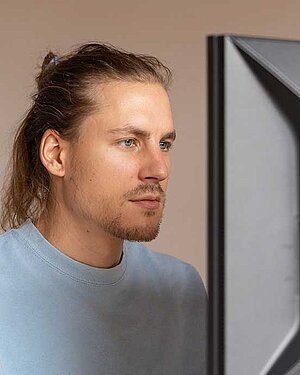
"Only once you have tried such a monitor do you know what you have missed. And by creating individual calibration targets, there's even a lot of room for improvement."
Dreblow's conclusion:
Dreblow also sees the possibility of being able to connect the monitor to his laptop with just one USB-C cable, which transfers both image and data signals as well as charging current, as a great added value. And so the professional monitor is a perfect foundation stone for his own studio in Wendland. That's what Dreblow wants, and that's where he sees the centre of his life in the future. "I hope to be able to continue on my path as a photographic artist. My dream is to be able to live from photography," Dreblow wishes. The 2nd place of the New BFF Promotion Award is certainly a good basis for this. "And it is also a nice confirmation for my parents that what their son is doing in the forest really does have artistic value," Dreblow adds with a smile.
Info about the photographer: www.marvindreblow.com
